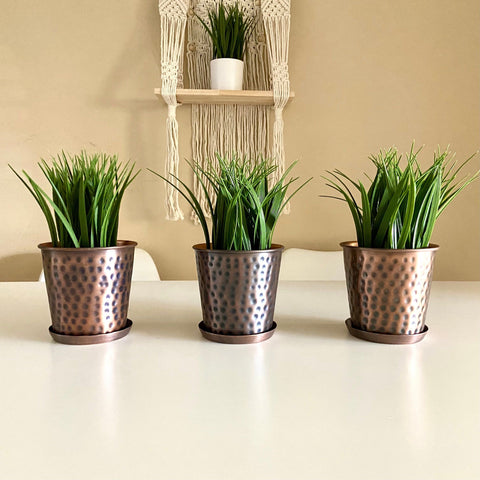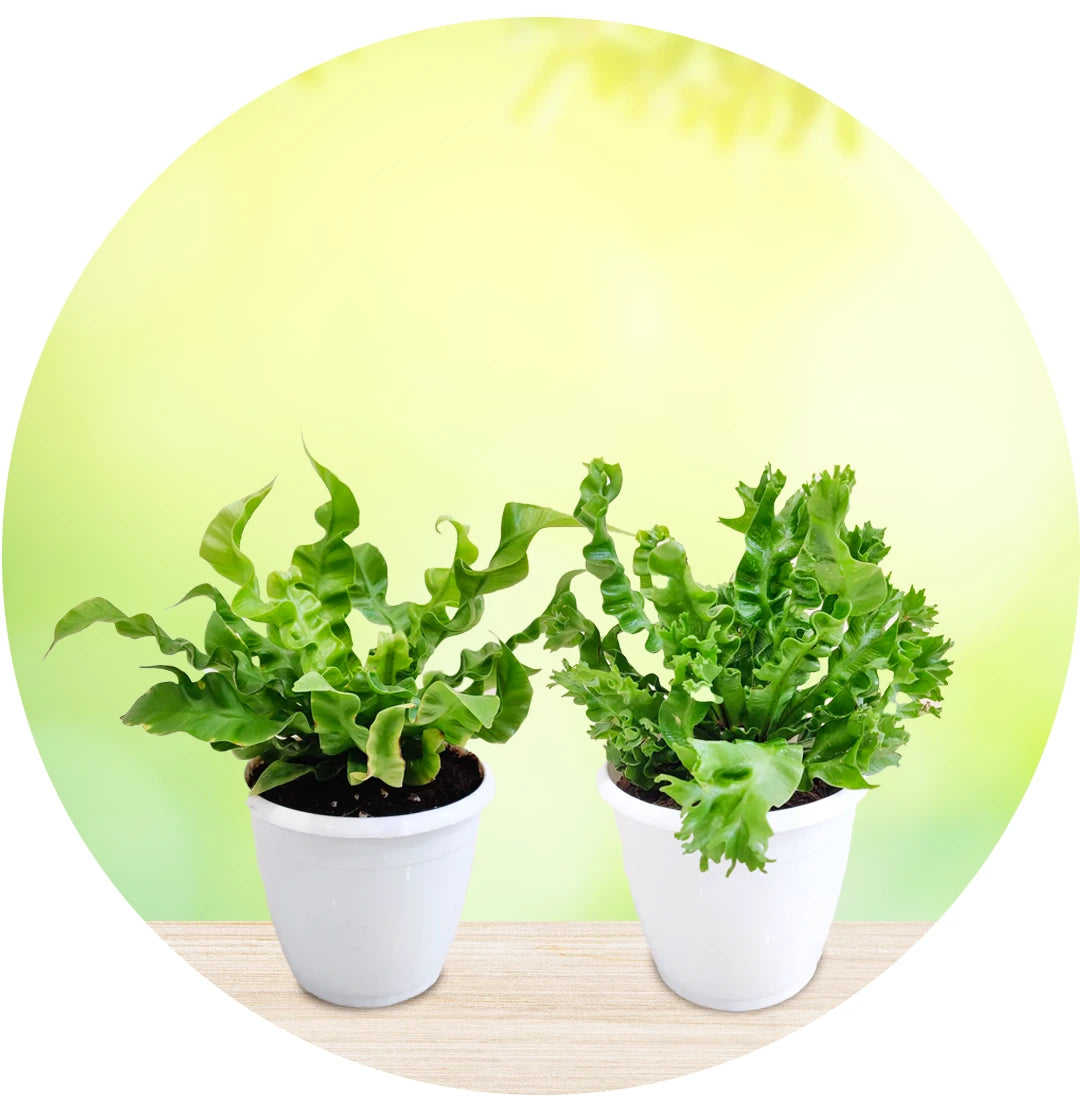
How To Choose The Best Pots For Your Succulents
Buying succulents may be an easy task with our compiled list of "The Easiest Beginner-friendly Succulents To Grow Indoors," which can help you pick the best specimens to kick off your collection. But the most important part of succulent gardening is finding the right pot for your green babies.
Succulents are not only pretty but also undemanding, easy to look after, forgiving, and fuss-free plants to have indoors. Once the basics are met, they will flourish even without continuous monitoring and maintenance. The basic requirements include the proper potting mix, watering, and light conditions, as well as a suitable container to house them in.
Choosing a suitable planter for your succulents may be a difficult task, especially if you're a newbie in this field. A small pot may interfere with root growth, while a large container may cause waterlogging, soggy roots, and even fungal infection, resulting in the death of your lovely plants!
So, what's the right size? What is the best material for a succulent planter? We will discuss all these questions and anything related to succulents' housing. Let us begin our journey to getting the best pots for your green babies!

What Should You Consider When Choosing a Planter?
Choosing the best possible container for your succulents requires some careful consideration. Planting succulents in too small of a container might stunt their development while planting them in an extra-large container can damage their fragile roots.
Knowing a bit about the succulent's roots will help you decide on the appropriate planter size. Both taproots and hair roots can be found in most succulents. A taproot extends far below the surface of the soil to reach the lower levels and store water for later use. Hair roots are quite shallow and spread out along the surface to drink up moisture from rain or dew. We hope this makes things a little easier for you. Keeping this in mind is crucial if your plant pals have this root structure.

One of the most important considerations when purchasing a succulent planter is whether the container includes drainage holes. If your container lacks any, it is preferable to drill holes at the bottom because succulents are susceptible to overwatering and cannot tolerate wet feet.
Choosing The Correct Pot Size
Whether you're growing them outdoors or indoors, succulents need the right planter to thrive. As we already mentioned, the planter shouldn't be too big or too small, so keeping these tips in mind will help you select the right size container for your green babies.
- The general rule of thumb for selecting an appropriate planter is that the pot should be at least 5 or 10% larger than the size of the plant. Give the plant at least two or three inches of space on all sides. Your plants will appreciate the extra room, and you won't have to worry about them outgrowing their home.
- The roots of your succulents could spread too quickly and undermine the plant's health if you give them too much room in a huge container.
- Small pots won't prevent the roots from drying out and dying due to a lack of oxygen. So, it's ideal to pick the correct size according to your plant's size and variety.
- The horticultural experts believe in choosing a pot with a diameter 10 percent bigger than the widest part of your plant.
- If you want your greens to flourish, you also need to consider the material you use for the planter.
What Planter Material Should You Go For?
You don't have to worry too much about buying a planter for your succulents, whether it's a terracotta or clay pot, ceramic or wooden. We've got it all covered here!
1. Terracotta Pots

When using terracotta containers, keep in mind that the soil will dry out quickly due to the pot's porous nature and the sun's heat. Succulent plants thrive in these containers. Using pottery plants can also be ideal!
2. Ceramic Pots

As with terra cotta, ceramics are porous and allow air to circulate. In addition to being a great heat absorbent, it is also visually appealing, as they come in attractive, eye-catching designs and colors.
Ceramic pots here!
3. Plastic Pots

The primary benefit of using plastic containers is their portability. However, they aren't very breathable. Water may pool and rot your succulents if you use them. You should use a container with holes that let water drain out, and a good succulent potting mix will keep water from pooling.
4. Glass Pots

With their sleek, contemporary appearance, glass containers are number four on the list. On the other hand, if they lack drainage holes, it would be wise to avoid purchasing them. In addition to waterlogging, the soil can't dry out in a glass container unless the opening is quite large. The added bulk and weight make it difficult to relocate them.
5. Wooden Containers

This is a great way to give your cacti and succulents a touch of modern vintage style, and it also looks great. However, the wood is prone to rot, which is the single biggest drawback. Other than that, wooden containers are easily relocated due to their lightweight.
6. Metallic Pots

When it comes to pots, it's best to avoid using anything metallic, like metal bowls or planters, because the rusting process can be harmful to your plants. Refrain from getting these, no matter how stylish or trendy they look!
Now that you have good options for material for your succulent planters, the real fun begins here!
Multiple Succulents In One Container

You need to figure out how much room each succulent will need if you wish to put them in the same pot. Keep in mind that different plant varieties may have varying light requirements, and space them out correctly to ensure healthy growth. If you find that your succulents are getting too crowded in their current container, you may have to move them to a single pot. To make your plants grow larger and spread, give them a little "breathing room." This will result in excellent health for your plants.
Decisions on Colors and Patterns

In this respect, we can be sparing with our recommendations. You have complete freedom to select the form, texture, and hue of your pots. Alternatively, you may select a pot whose colors and patterns echo or complement those of the plant's foliage. To add interest to your space, use monochromatic colors or snappy pots with quirky designs in addition to lush green plants.
We trust that you feel more prepared to select a suitable container for your succulent babies. If your plants are kept in a suitable planter or container, they will flourish and grow to great heights without constant care on your part.

Important Tips To Remember:
- A drainage hole is a must to allow water to flow out easily
- Before you do anything else, learn about your succulent varieties and their requirements.
- A tray under a pot to protect your space from water damage
- Choose a planter that is 5 or 10% bigger than your plant's size
- Ceramic or terracotta planters are a great option for beginners
- Give your plants a little space for breathing so they can grow with no issues
- Avoid using planters that are too large or too small, since this might affect the growth of succulents.
- If a planter isn't perfect, well-draining soil comes in handy.
- Avoid densely packed succulent arrangements.
- Don't get caught up in trendy or stylish pots if they're not going to help your plant develop.
- Avoid using metal planters, which can corrode.
- If your plant is large, avoid using heavy materials so you can easily transport it
- For mixed arrangements, choose a shallow container with a drainage hole
- Small succulents work well in hanging pots.
- Try your hand at DIY planters, be creative, and have fun!
Conclusion
Succulents, which are native to harsh and robust environments, are simple plants. Giving them enough water and nurturing can get them in good form, so there's no need to complicate things and simply go with the flow, oh! Yes, let the water flow out as well; these plants dislike puddles!
FAQ
-
Do succulents require a drainage-holed container?
This is great because succulents are both hardy and water-sensitive. Water should not be puddled to avoid wet roots and bug infestations. You can drill a hole in your pot or be extremely mindful of how much water you use.
-
What is the best container for succulents?
Unglazed clay is an excellent choice for potting succulents. Any breathable material, such as terracotta, will allow excess soil moisture to evaporate.
-
Do succulents prefer shallow or deep containers?
It depends on the variety. A pot that is too deep can cause wet soil and root rot.
____________











Leave a comment